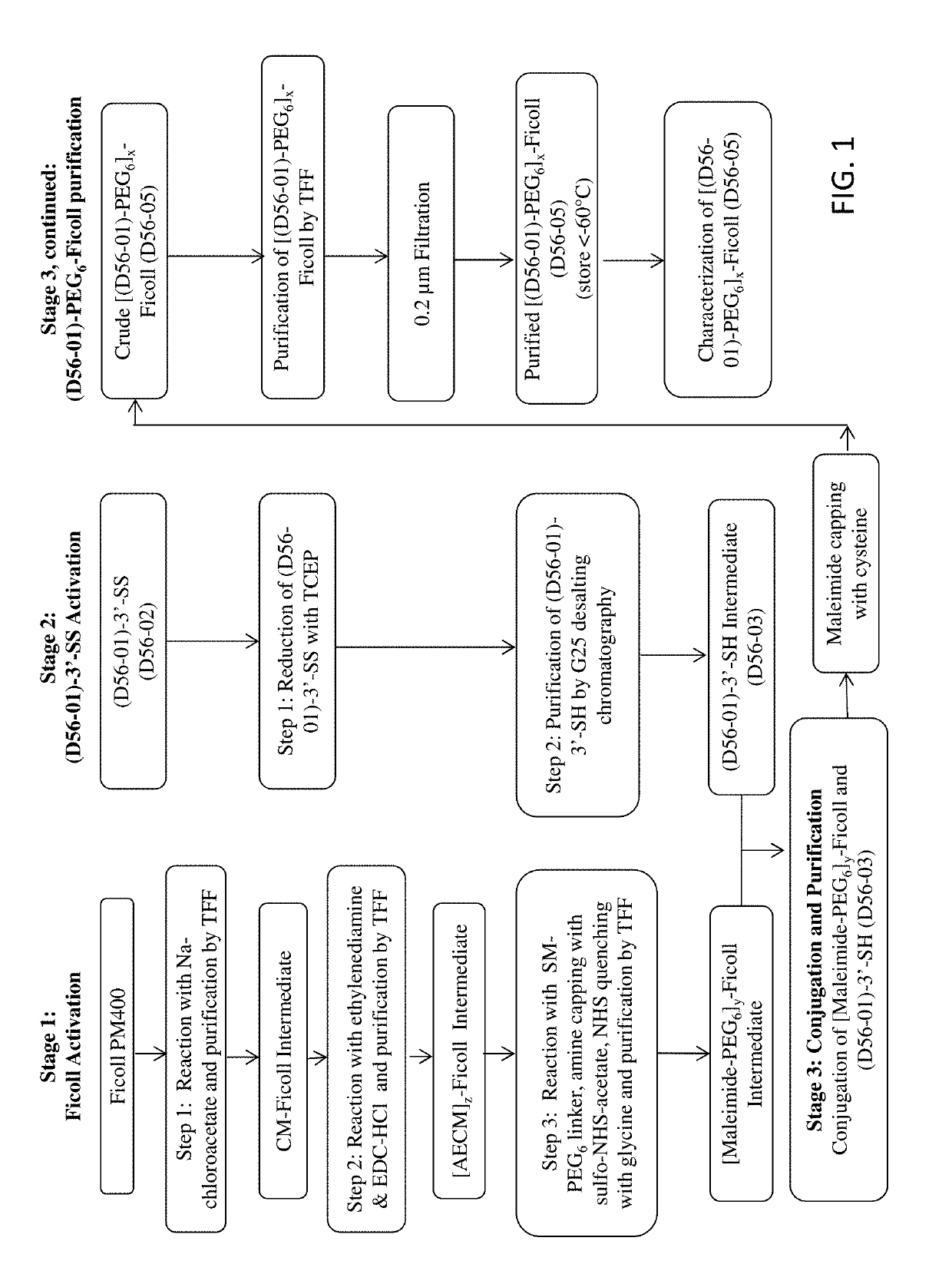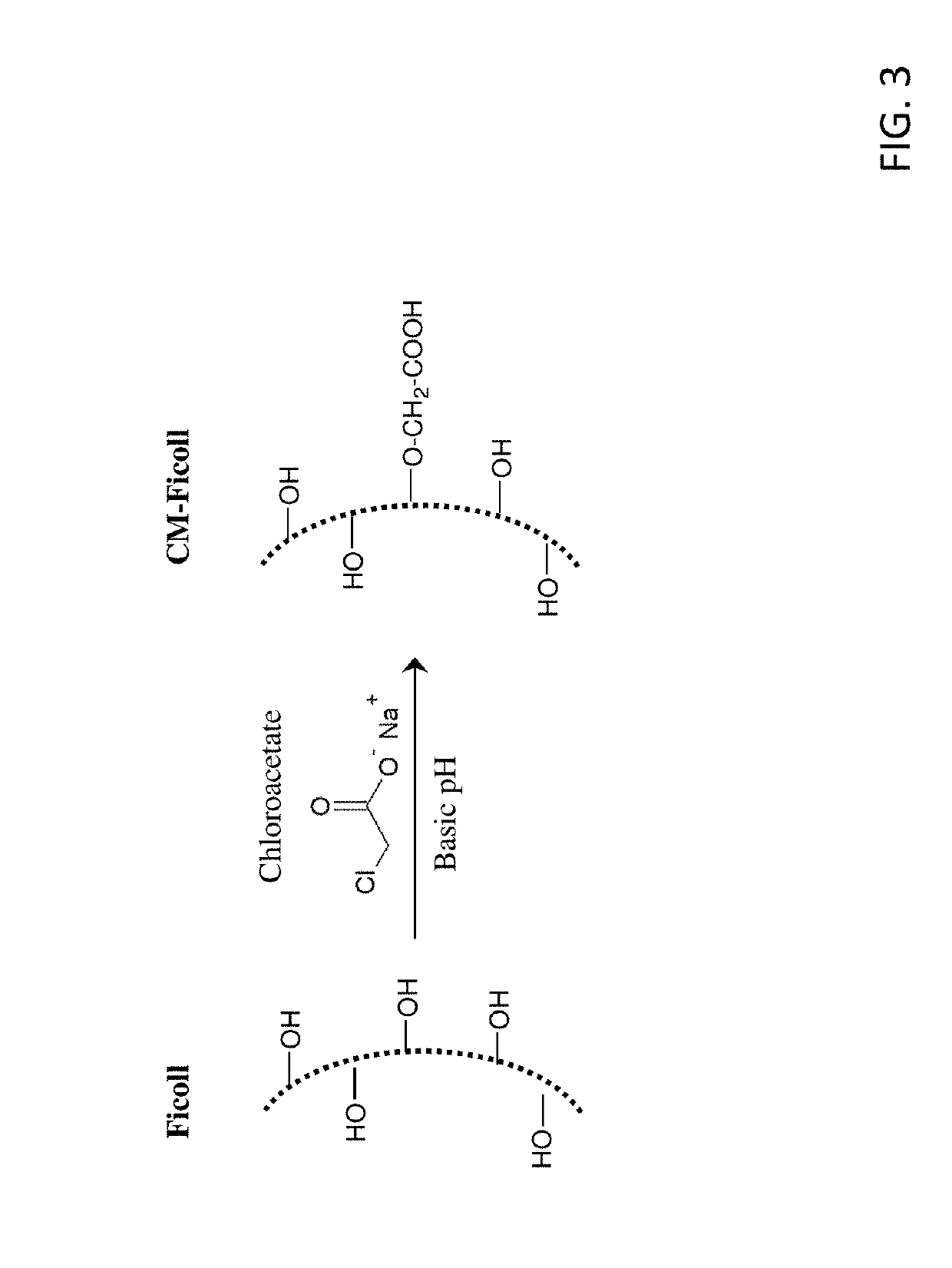Branched chimeric compounds, and methods of use thereof
- Summary
- Abstract
- Description
- Claims
- Application Information
AI Technical Summary
Benefits of technology
Problems solved by technology
Method used
Image
Examples
examples
[0227]Abbreviations: BCC (branched chimeric compound); CC (chimeric compound); HEG (hexaethylene glycol); LCC (linear chimeric compound); MWCO (molecular weight cut-off); PEG (polyethylene glycol); PN (polynucleotide); Sp (spacer); TFF (tangential flow filtration).
[0228]Although, the present disclosure has been described in some detail by way of illustration and example for purposes of clarity and understanding, it will be apparent to those skilled in the art that certain changes and modifications may be practiced. Therefore, the following synthetic and biological examples should not be construed as limiting the scope of the present disclosure, which is delineated by the appended claims.
SYNTHETIC EXAMPLES
example 51
of Polynucleotides and Chimeric Compounds
[0229]Table S1-1 shows the structures of polynucleotides (PN) and chimeric compounds (CC) referred to in the Examples. The nucleotides in the polynucleotides and chimeric compounds are 2′-deoxyribopolynucleotides. HEG is a hexaethylene glycol spacer moiety. Other spacers are described in the specification and figures. Except where noted in Table S1-1 or in specific examples, all internucleotide linkages and linkages between nucleic acid moieties and spacer moieties are phosphorothioate ester linkages. Table S1-1 also shows CCs (e.g., D56-02, D56-03, D56-07, D56-08, D56-10, D56-11) with an end linking group (e.g., —(CH2)6-SS—(CH2)6-OH, —(CH2)6-SH, —(CH2)3SS—(CH2)3-OH, —(CH2)3SH, HO(CH2)6-SS—(CH2)6-, and HS(CH2)6-) used to link these molecules with a branched carrier moiety (e.g., [Maleimide-PEGn]y-FICOLL) to create branched CCs. These linking groups are connected to the polynucleotide or CC via a terminal nucleotide or spacer moiety with a pho...
example s2
of Polynucleotides (PN) and Chimeric Compounds (CC)
[0230]Polynucleotides were manufactured by solid phase synthesis using phosphoramidite chemistry with oxidative sulfurization, purified and isolated according to the manufacturer's protocols (Molecules 2013, 18, 14268-14284). The nucleoside monomers used were 5′-dimethoxytrityl-protected-2′-deoxynucleoside, 3′-((2-cyanoethyl)-(N,N-diisopropyl))-phosphoramidites. For the CCs, the HEG spacer was incorporated using 18-O-dimethoxytritylhexaethyleneglycol, 1-((2-cyanoethyl)-(N,N-isopropyl))-phosphoramidite (e.g., Space Phorphoramidite 18 from Glen Research, Sterling, Va.). For D56-11, the 5′-C6-disulfide linker was incorporated using 1-O-dimethoxytrityl-hexyl-disulfide-1′-((2-cyanoethyl)-(N,N-diisopropyl))-phosphoramidite (e.g., Thiol-Modifier C6 S—S from Glen Research, Sterling, Va.). For D56-07, the 3′-C3-disulfide linker was incorporated using 1-O-dimethoxytrityl-propyl-disulfide, l′-succinyl-solid support (e.g., 3′-Thiol-Modifier C3 ...
PUM
| Property | Measurement | Unit |
|---|---|---|
| Mass | aaaaa | aaaaa |
| Mass | aaaaa | aaaaa |
| Volume | aaaaa | aaaaa |
Abstract
Description
Claims
Application Information
 Login to View More
Login to View More - R&D
- Intellectual Property
- Life Sciences
- Materials
- Tech Scout
- Unparalleled Data Quality
- Higher Quality Content
- 60% Fewer Hallucinations
Browse by: Latest US Patents, China's latest patents, Technical Efficacy Thesaurus, Application Domain, Technology Topic, Popular Technical Reports.
© 2025 PatSnap. All rights reserved.Legal|Privacy policy|Modern Slavery Act Transparency Statement|Sitemap|About US| Contact US: help@patsnap.com



